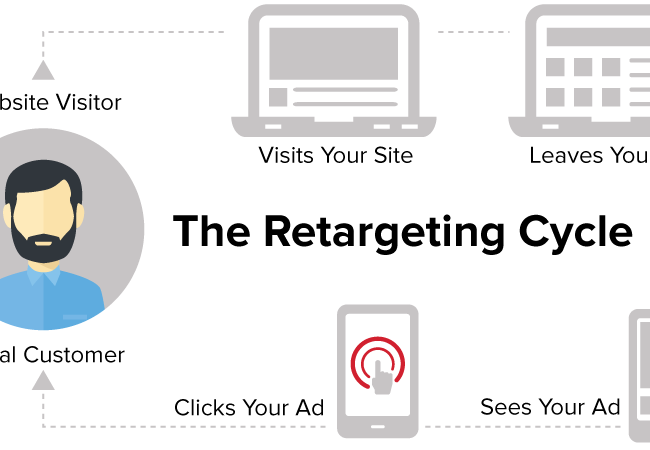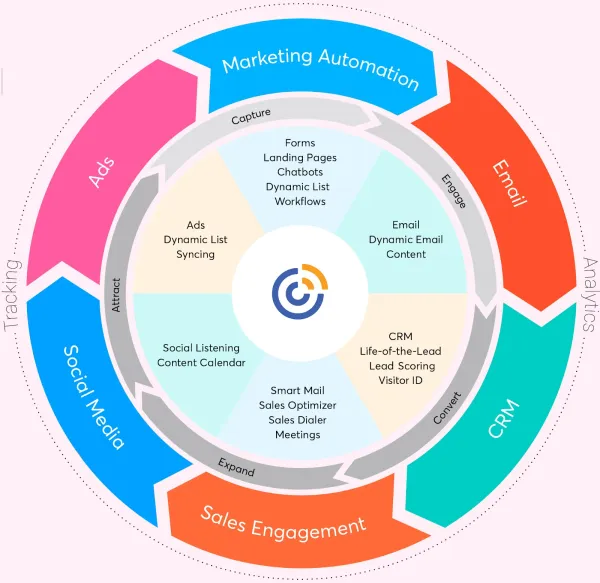For those who don’t know, retargeting is the practice of reaching web visitors after they leave your site. It involves systematically engaging customers who didn’t convert (i.e. buy a product or service) through email, advertisements, and other mediums.
According to Criteo, customers who receive retargeted ads and communications are 70 percent more likely to convert than those who experience no retargeted content.
In this post, we will examine 5 of the most commonly used retargeting strategies and one strategy that your competition isn’t using, but you should be.
1. Navigation-based (behavioral) retargeting
You’re probably relatively familiar with behavioral retargeting, which involves showing ads relevant to specific pages or sections users visited. For instance, if a user arrives on your website, visits the shopping cart but doesn’t make a purchase, you can target this user with ads on different sites that they visit. Your site does this by placing a “cookie” on the visitor’s browser which registers which pages your users visited.
Navigation-based retargeting is probably the most common remarketing strategy, but it leaves something to be desired. Just because someone went to your shopping cart or even placed an item in their cart it doesn’t necessary mean they want to make a purchase.
2. CRM retargeting
CRM data contains personal information regarding your web visitors: email, names, phone numbers, previous sales and other information to help you understand who your customers are. Much of the data within your CRM is “offline,” meaning your business can’t collect it automatically through dropping a cookie. But you can use it to retarget these users.
Many retargeting platforms including Smarketing Cloud and Adroll now allow you to upload your CRM data directly into the platforms. The platform then matches your CRM data, typically using email addresses, to unique online users that you can retarget.
For example, say you take your customer sales data from your CRM of all purchasers of a laptop in the last 6 months and upload it into your retargeting platform. The platform will create an audience segment of those laptop purchasers and you could create a retargeting campaign to target these users with ads to purchase laptop accessories.
3. Email retargeting
Ever wanted to retarget individuals who opened specific communications? Email retargeting allows you to do just that. Whenever a visitor opens an email, a piece of code places a cookie on his or her browser. Moz referenced a study from Forrester Research, which found retargeting emails generate almost four times the revenue of emails that are not a part of a retargeting effort.
Many companies use email retargeting to touch base with customers who abandon shopping carts. For example, suppose a customer places several science fiction books into Barnes & Noble’s online shopping cart. Barnes & Noble could send an email to that person notifying him that the items are still in the shopping cart. If the person opens the email, Barnes & Noble could then retarget them with ads to purchase the science fiction books.
4. Search retargeting
This type of retargeting involves connecting with individuals after they’ve searched for keywords or phrases relevant to your business. For example, if you are an airline company and someone enters “flights to Dublin” into a search engine, you could target that person with ads for ‘cheap flights to Dublin’.
The biggest difference between search retargeting and other forms of retargeting is that it targets users who have never visited your website and from whom you’ve never collected an email address. So it has greater reach than other forms of retargeting as you are reaching new potential customers as opposed to existing users.
5. Contextual/2nd Party Data retargeting
People often interact with multiple brands to reach a specific goal. Some of those brands may not compete in the same industry but still accommodate the same customers. Marketers can apply contextual retargeting to these types of situations.
Contextual retargeting is the practice of exchanging pixels (those bits of code that drop cookies into customers’ browsers) with another business whose services or products are relative to your own.
For example, suppose you work at a hotel chain and want to reach people who use Ryanair to book flights. Ryanair could agree to exchange pixels and they place your pixel on their “Thank you for booking!” page. This means that you will collect all the Ryanair customers who made a booking on their site and you can retarget these users with ads to book accommodation with your company.
Contextual retargeting is similar to search retargeting as you can reach new potential customers, unlike behavioral retargeting where you are retargeting visitors who left your site without converting.
6. Intent-based retargeting
Despite the main advantages of the previous types of retargeting, they still don’t deliver ads according to customers’ wants and desires. You may assume a person who purchased a laptop in the last 6 months might want to purchase laptop accessories but they could already have the accessories they need. So if you were to bombard this user with ads to purchase laptop accessories it may detract from their experience. Mistakes such as these are why you need visitor intent. Equally, just because someone bought a flight to New York doesn’t mean they will need a hotel in New York.
Intent-based retargeting delivers ads that reflect visitor wants and needs and is the next retargeting frontier. Smarketing Clouds Audience Solutions take this first-party intent data and use our sophisticated recognition technology to accurately segment all your visitors that arrive on your site.
This means you can push accurate intent data derived from visitor feedback directly into your Demand Side Platform.
Therefore, if you know the intentions of your website visitors—to browse, research or buy—you can nudge them towards a purchase by offering them a relevant incentive, showing them audience-appropriate content or advertising to them with the right frequency.
For example, a visitor that seems apprehensive to buy—because they have done a lot of research but never made a purchase—may need gentle retargeting that offers a discount such as free shipping. On the other hand, a user that has the intent to make a purchase may respond well to more aggressive retargeting.
In summary, retargeting is a powerful tool but when combinded with intent data, like audience data that Smarketing Cloud provides, it will outperform traditional retargeting strategies.











